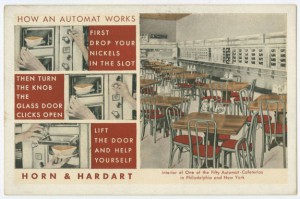
Automats
Beloved by generations of diners and immortalized in art, song, cinema, and poetic verse, Automats, also known as “automatics” or “waiterless restaurants,” were popular manifestations of an early-twentieth century modernizing ...

Beloved by generations of diners and immortalized in art, song, cinema, and poetic verse, Automats, also known as “automatics” or “waiterless restaurants,” were popular manifestations of an early-twentieth century modernizing ...
Baking, one of the earliest businesses in Philadelphia, did not become a major part of the local economy until the late nineteenth century. It remained a viable industry throughout the region’s history, however, ranging from small neighborhood bakeries to large baking companies with national product distribution. Philadelphia supported several commercial bakers from the beginning. A ...
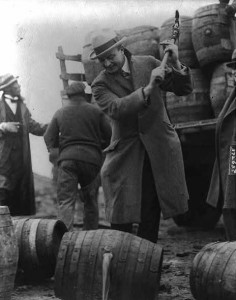
Bootleg liquor, produced illegally during Prohibition (1920-33), flowed into the Philadelphia region from a variety of sources, including overseas shipments, small home stills, large stills in urban factories and country barns, beer breweries, and manufacturers of industrial alcohol. Philadelphia’s location at the confluence of the Delaware and Schuylkill Rivers, just inland from the Atlantic ...

Anderson & Campbell Preserve Company formed in Camden, New Jersey in 1869. Throughout the nineteenth and twentieth centuries the company grew to become one of the largest food companies of the twenty-first ...
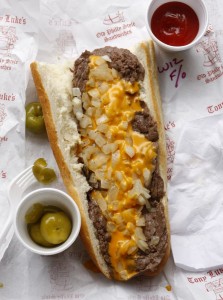
A cheesesteak is a sandwich unlike any John Montagu, the fourth Earl of Sandwich (1718-1792), might have encountered. Thin bits of frizzled beef served on a locally-made Italian roll, usually topped with fried onions and Cheez Whiz drawn from the can with a paint stirrer, the Philly cheesesteak also is distinguished, in part, by its place in presidential ...
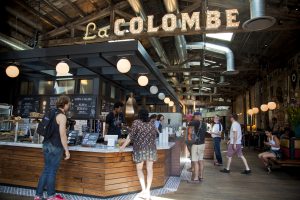
Philadelphia’s first coffeehouse opened in 1703, and by mid-century half a dozen operated within the city limits. Their purpose, however, changed in important ways as the eighteenth century progressed. Early coffeehouses primarily served the needs of traders and mariners, acting as crucial centers of commerce. In the decades following the American Revolution, however, some coffeehouse ...
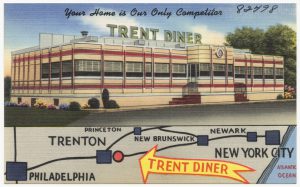
With its origins in late-nineteenth-century street vending and transient “quick lunch” operations such as horse-drawn food carts, the diner emerged as one of the most popular and successful restaurant genres in the United States. Although diners entered a period of protracted decline after World War II with the arrival of fast food restaurants, changing consumer tastes, and patterns of ...
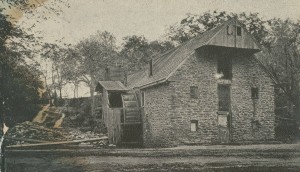
At the time the first European colonists settled in the Delaware Valley, few places in the world were as well-suited to the cultivation of grains. By 1750 the Delaware Valley produced such a surplus that its wheat and flour not only supplied the American market but also were exported to Europe, Africa, and the ...
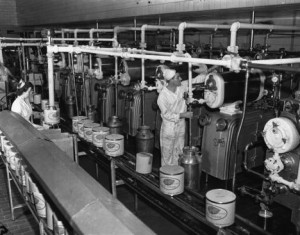
For most of Philadelphia's history, food processing was an important industry, pioneering new products and employing tens of thousands of workers. Many well known national corporations got their start as small businesses in Philadelphia. Shifts in corporate strategies led to a decline in the industry in the region by the twenty-first century, though many small food processors ...

Local grocery stores, along with churches, elementary schools, and often saloons, have defined and anchored urban and suburban neighborhoods. General grocery stores first appeared in Philadelphia and the surrounding area in the early nineteenth century and increased in number after the Civil War as populations exploded in industrial cities like Camden and Philadelphia and their ...
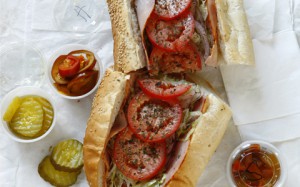
A hoagie is a sandwich made on a long Italian roll containing a variety of Italian meats and cheeses, lettuce, tomato, and onion, and dressed with olive oil, vinegar, and spices. Its exact origins are uncertain, but by the end of the twentieth century a mayoral proclamation declared the hoagie to be the “official sandwich” of ...
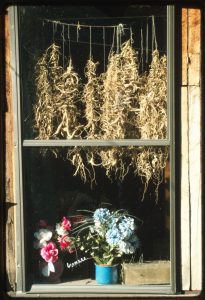
Although Philadelphia has been a premier city for medical innovation since the mid-eighteenth century, the diverse peoples of the region also have used home remedies to heal themselves. Home remedies preserve traditional domestic healthcare practices, and they have persisted into the twenty-first century as part of alternative medicine and mainstream scientific therapies. Medical recipes often ...
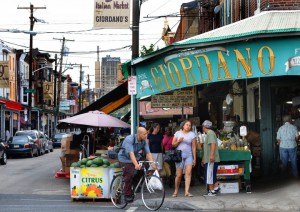
The Italian Market, located in the Bella Vista neighborhood of South Philadelphia, is the popular name for the food shops and curbside stands on Ninth Street between Fitzwater and Wharton Streets, where merchants sell fresh produce, prepared foods, imported products, goods, and equipment for both household and commercial ...
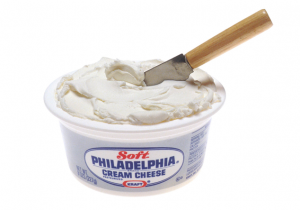
Although not made or invented locally, Philadelphia Cream Cheese reflects the region’s agricultural history and reputation as a purveyor of fine foods. Established by a New York distributor of dairy products in 1880, the brand came to be owned by the Kraft Heinz Company of Pittsburgh and Chicago. Nevertheless Philadelphia, printed in blue capital letters on foil wrapping and on the lids of ...
Philadelphia pepper pot, a spicy stew-like dish comprised of tripe, other inexpensive cuts of meat, vegetables, and an abundance of spices and hot peppers, is related to the pepper pot soup of the Caribbean region. By the early nineteenth century, the dish had developed characteristics making it uniquely Philadelphian. Philadelphia pepper pot became popular throughout ...
Soft pretzels are to Philadelphia as crepes are to Paris. Both are icons of their respective cities, but one goes better with Nutella and the other with mustard. With cheesesteaks and water ice, soft pretzels complete the city's culinary ...
Despite the national prohibition of alcohol from 1920 to 1933, Philadelphia earned a reputation rivaling Chicago, Detroit, and New York City as a liquor-saturated municipality. The Literary Digest described Pennsylvania as a "bootlegger's Elysium," with every city as "wet as the Atlantic ...
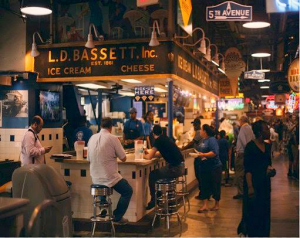
Public markets in Philadelphia belong to an ancient tradition of urban food provisioning in which the governing authority designated specific places for the exchange of life’s necessities. A formal and organized system of exchange was intended to attract local and regional producers to the city in order to ensure citizens an adequate supply of healthful ...
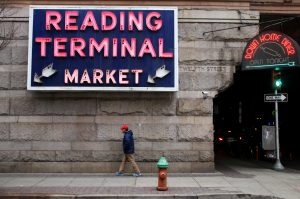
Opened to the public in 1893, Reading Terminal Market came into being amid the chaotic, but transformative, industrial and commercial forces that swept through late nineteenth-century Philadelphia. A descendant of the market-oriented atmosphere and culture entrenched primarily along High (subsequently Market) Street since the colonial era, the Reading Terminal weathered myriad commercial, labor, ...
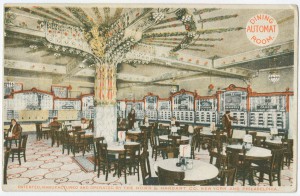
From colonial-era taverns to the celebrity chef establishments of the early twenty-first century, Greater Philadelphia’s restaurants illuminated the region’s socioeconomic, cultural, and culinary trends while also providing sustenance for millions, employing thousands, and in some cases emerging as historic and nostalgic ...

Root beer, a popular beverage in the United States since the late eighteenth century, began as a medicinal beverage produced at home. In the nineteenth century, carbonated root beer grew in popularity, particularly after Philadelphia pharmacist Charles Elmer Hires (1851-1937) presented his version of root beer at the 1876 Centennial Exhibition. Although the popularity of ...
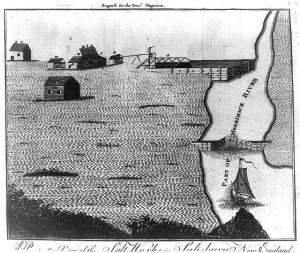
Colonial Americans depended on Great Britain for many necessities. Primary among them was salt, the essential ingredient in curing meats and preserving foods through the winter. At the start of the American Revolution, the British Navy blockaded American ports and largely shut off the supply of imported salt. In Philadelphia, salt prices shot upward. Starting in July 1775, the Continental ...
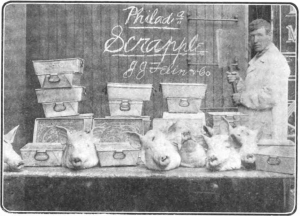
Scrapple, which came to the Philadelphia region from Germany, is a loaf of cooked pig parts thickened with cornmeal or buckwheat usually spiced with sage and pepper. Once cooled, the loaf is sliced, fried, and served as a breakfast side dish, often with syrup. Not just a culinary transplant, scrapple exists because of the interplay of Old and New World traditions and ...
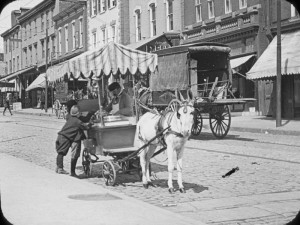
From the colonial period to the present, street vendors (or “hucksters”) have been integral yet contentious features of Greater Philadelphia’s economic landscape. Providing massive numbers of customers with food, clothing, and other goods while allowing many working people an occupational foothold in the region, vending also sparked controversies regarding taxes, regulation, public ...
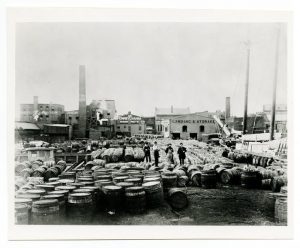
Fueled by extensive trade with sugar islands in the Caribbean, Philadelphia became a leading center of sugar refining in colonial America. Although the city lost its dominance of the industry to New York by the end of the eighteenth century, local sugar refining continued to expand, particularly under the Pennsylvania Sugar Refining Company (“Penn Sugar”). The rise of ...
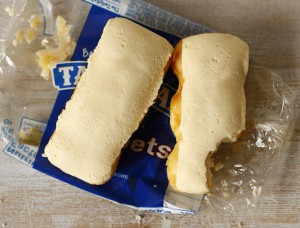
“Nobody bakes a cake as tasty as a Tastykake” has been a brand tag line known by virtually every Philadelphian for a century. Indeed, few things are as iconically associated with the city and region as ...

Taverns in and around Philadelphia have been vital institutions, offering respite, nourishment, and camaraderie to travelers and patrons. Over time, attitudes and laws regarding the consumption of alcohol altered the character of the tavern and gave rise to modern hotels, restaurants, and ...

Served by Italian bakeries in South Philadelphia since the early twentieth century, the tomato pie became known by many names: church pie, square pizza, red pizza, granny pizza, and red pie. Although made in a rectangular or square shape similar to Sicilian-style pizza, tomato pie within the city and surrounding region remained distinct from contemporary ...
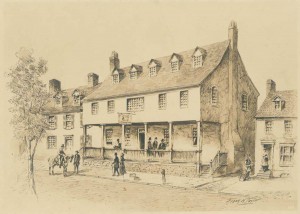
For nearly a hundred years from 1693 to 1781, Tun Tavern served residents and visitors of Philadelphia near the Delaware River waterfront with food, spirits, and sociability. Also a meeting place for social and military organizations, Tun Tavern is best remembered as the “birthplace” of the United States Marine ...
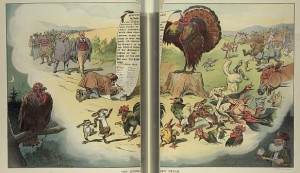
The vegetarian movement in the United States was born in Philadelphia, and the city was pivotal in several of its most important developments. Throughout, Philadelphia maintained an ongoing community of vegetarians, including those who became known as ...

The first two convictions of Americans for federal treason in United States history occurred in Philadelphia in the aftermath of the Whiskey Rebellion, an uprising against the federal excise tax on whiskey that took place primarily in western Pennsylvania in 1791-94. Philadelphia served as the nation’s capital during this period and therefore was the city in which the excise legislation was ...
Connecting the Past with the Present, Building Community, Creating a Legacy